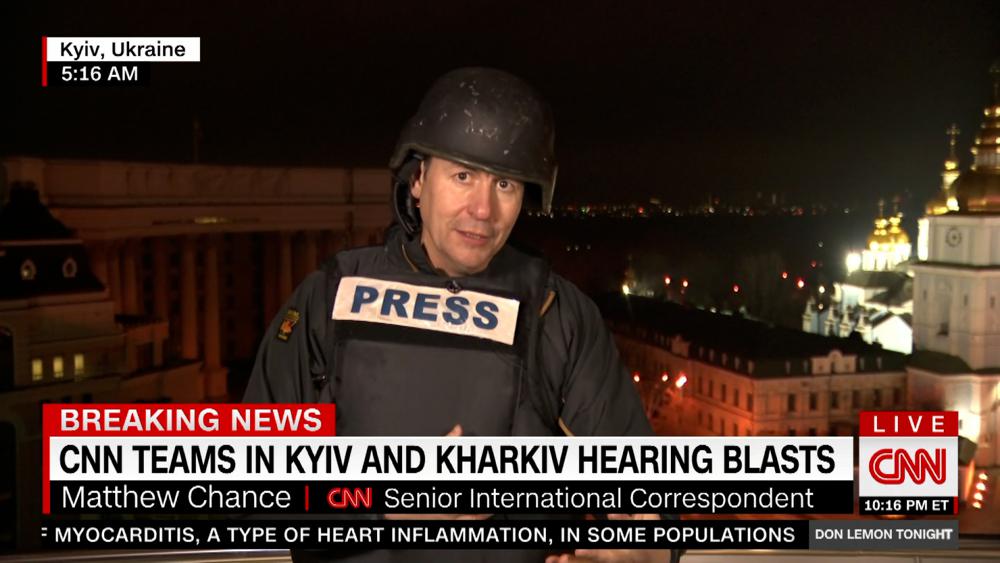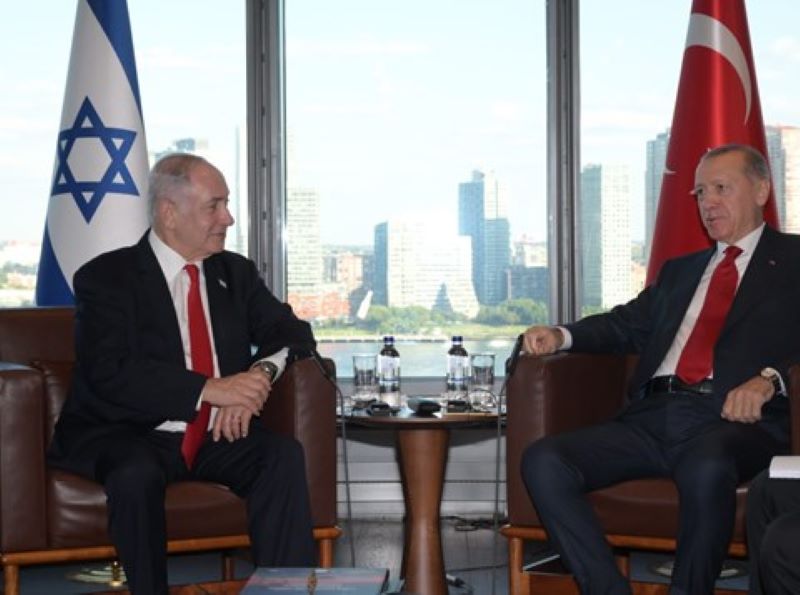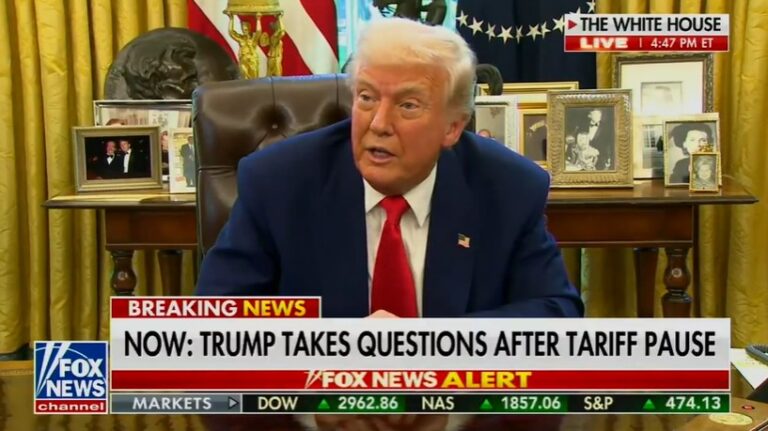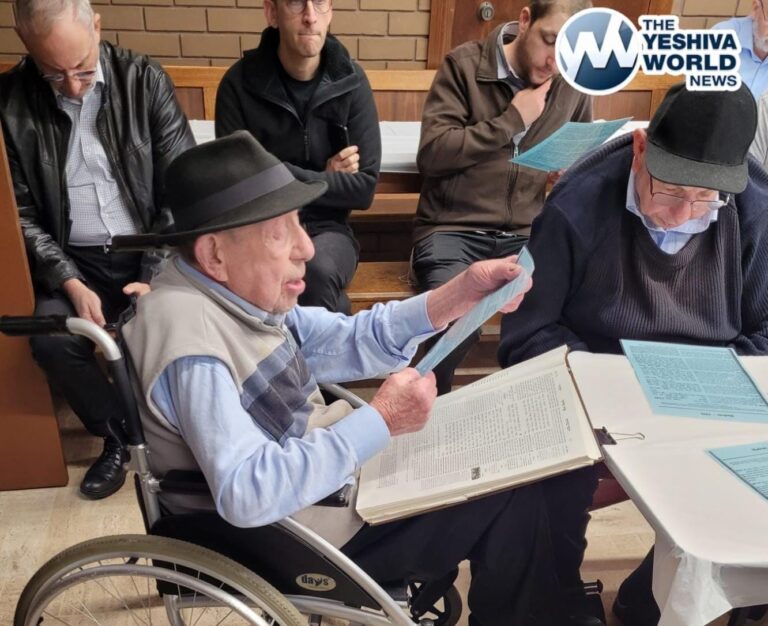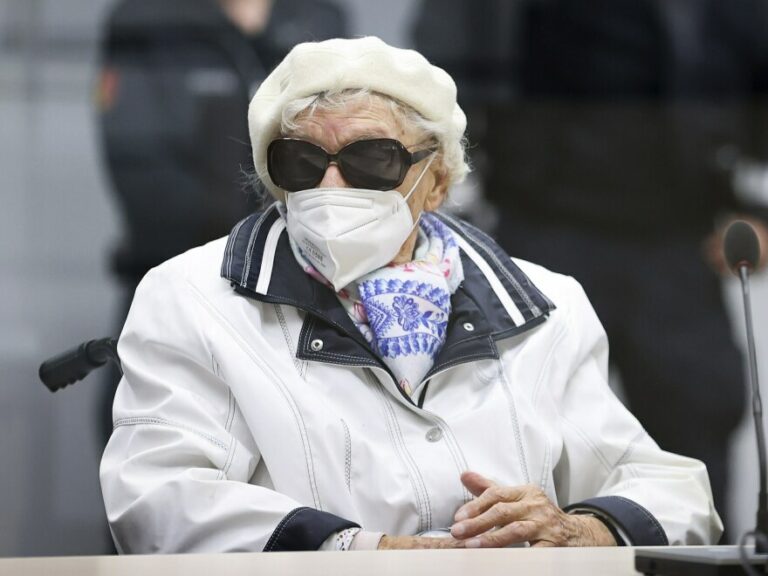For journalists, the confusion surrounding Russia’s attack on Ukraine deepened the challenge of covering it — and made one CNN reporter’s stumbling upon an airport under attack Thursday all the more remarkable.
While Russia’s invasion had been an ominous possibility for months, it unfolded with little reliable information from the attackers. Many reporters depended upon sporadic audio and video of bombs exploding in the distance, and details from Ukrainians and American intelligence, to try to tell the story of citizens in a Western-styled democracy suddenly plunged into war.
CNN’s Matthew Chance followed a tip from a Ukrainian source when he and a crew rushed to an airport about 20 miles outside the capital city of Kyiv.
Russians had attacked, but by the time Chance had arrived, he was informed that Ukrainians had regained control of the airport. He approached some soldiers guarding the gates for confirmation and was told he was mistaken.
He thought he was talking to Ukrainians.
“I said, ‘Where are they then?’” Chance told The Associated Press later. “He said, ‘We’re the Russians.’ We were like, what? We had no idea. The whole complexion changed. Suddenly, I realized we’d stumbled upon the advance position of Russian special airborne forces who had been deployed a couple of hours ago to take the airport.”
Chance was composed enough to ask for permission to do a live report. He was told he’d better hurry.
“I don’t think I’d ever driven so confidently up to a Russian checkpoint as I did today,” he said. “We didn’t realize they were Russians, of course. It could have gone, in retrospect, not very well.”
Russian information was difficult to come by and not considered trustworthy. CBS News’ Charlie D’Agata said the network was sometimes able to cross-check details with Russian sources.
“We do have to take that with a pinch of salt because the propaganda machine on the Russian side has been just off the hook over the last few weeks,” D’Agata said, “and it’s sometimes difficult for our journalists to decipher what’s right and what’s wrong.”
ABC News correspondent Martha Raddatz said Ukrainians sources and, in particular, American intelligence, have been a solid source of information on Russian moves while they were happening.
Information from the Russian Defense Ministry was sporadic and occasionally defensive; one announcement Thursday stated that military, and not civilian, locations were being targeted.
In retrospect, a new Russian regulation adopted several months ago was both chilling for journalists and a hint of what was to come. The regulation made it illegal for someone not registered as a foreign agent in Russia revealed information such as troop movements or positions to any foreign entity.
“You don’t get the kind of access with the Russians that you do with other countries, other militaries,” Chance said. “The majority of information I get about this conflict comes from the Ukrainian side. They’ve got much more of a culture of openness, where the culture in Russia is much more closed and opaque, particularly when you’re an American journalist or working with an American country.”
Information from Moscow immediately leading up to the conflict was considered suspect because it was evident that much of it had been recorded in advance, Trey Yingst, a Fox News reporter in Kyiv, said.
Yingst spent much of Thursday doing live reports from a hotel roof. A text message from an adviser to the mayor of Kyiv told NBC News reporter Erin McLaughlin to take cover because the Russians were firing a missile toward the capital from Belarus.
“All conflicts are unpredictable, and this one is particularly so,” said Douglas Jehl, foreign editor at The Washington Post. He said the newspaper was making safety of its correspondents a priority, particularly those where Russians were known to be stationed nearby.
As media outlets tried to get a handle on what was happening on the ground in Ukraine, social media was inundated with decontextualized and fake footage, adding to the confusion.
Facebook and Twitter posts purporting to show Russia’s attacks on Ukraine actually showed a range of different events, from a 2015 warehouse explosion in China to 2021 Israeli air strikes in the Gaza Strip. Users also shared video game footage as real, amassing millions of views across platforms.
In some cases, the responsibility for the spread of misrepresented videos and images fell on news outlets themselves. The Kyiv Post, a Ukrainian newspaper, tweeted a nearly 30-year-old image of an aircraft consumed by flames during an airshow in the U.K., with a false claim that it depicted a Russian plane shot down by Ukraine. The post was later deleted for violating Twitter’s rules.
Television news and broadcast networks all interrupted their Thursday afternoon programming to carry a statement and brief news conference by U.S. President Joe Biden.
News organizations like The Associated Press, The New York Times and Washington Post maintained ticker-like feeds that mixed news developments with observations on how the conflict was affecting the citizens of Ukraine.
Marc Santora, of the Times, wrote at one point: “A woman’s voice, blaring over loudspeakers across the city, pierced the calm in downtown Lviv. She was giving detailed instructions about what to do if the air raid sirens wail. Seek cover and don’t move until they stop. People didn’t react much.”
CNN’s Clarissa Ward interviewed a tearful woman who took shelter in a subway station in Kharkiv. ABC’s Raddatz said it was important to show the invasion’s impact on citizens — gas lines filled with people seeking to escape, a 7-year-old girl hearing an air raid siren for the first time.
Raddatz said she got a text message from a Pentagon official on Wednesday night, telling her she was likely experiencing the last few hours of peace in Europe for a long time to come.
“That made me sit down,” she said. “That was incredibly sobering.”
(AP)

